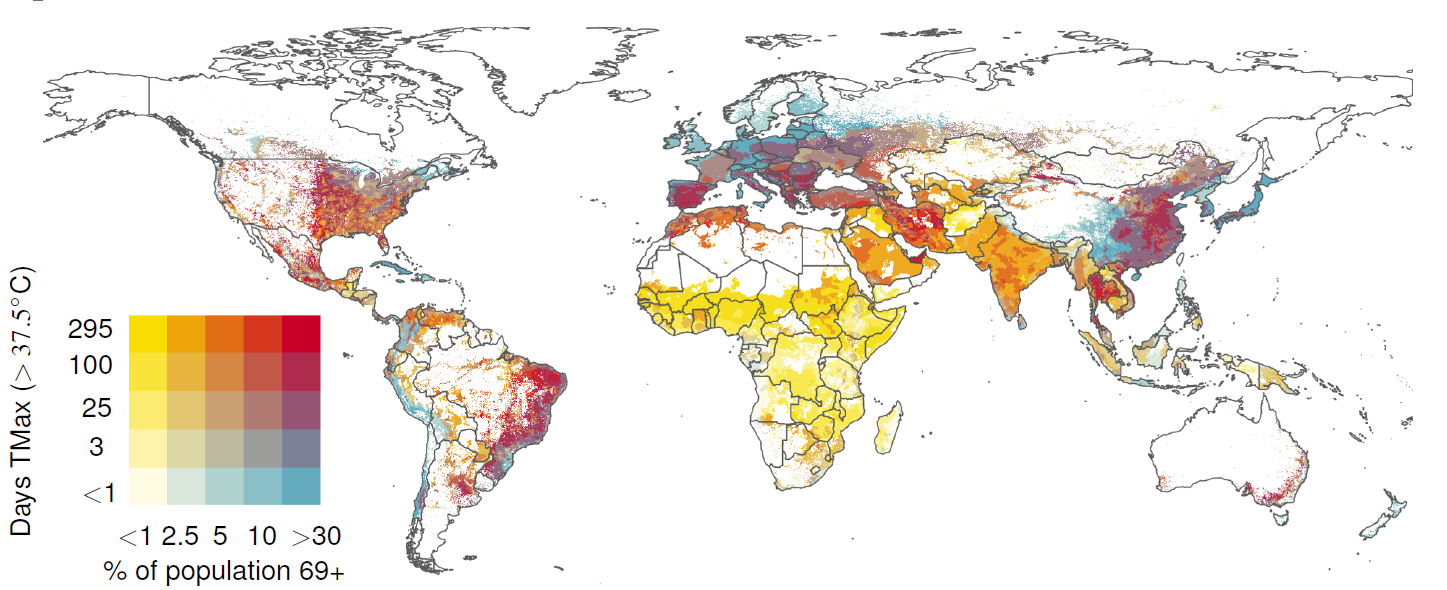
Over 200 million more elderly people worldwide are expected to face dangerous heat exposure by 2050, compared to now. The research results, published in Nature Communications by an international team of scientists, coordinated by CMCC and Ca’ Foscari University of Venice, provide in-depth information and a data visualization dashboard on demographic trends and risks associated with rising temperatures in several countries around the world.
Up to an additional 246 million older adults around the world are projected to be exposed to dangerous acute heat by the year 2050, compared to current levels — with those living in Asia and Africa experiencing the most severe effects — suggests a Nature Communications paper. The findings of the research can help inform regional heat risk assessments and public health decision-making. An interactive visualization dashboard displays the current and projected demographic changes and heat-related hazards across world countries.
The global population is aging at an unprecedented rate. The number of people aged over 60 years is expected to double to nearly 2.1 billion people by 2050, with more than two-thirds residing in lower- and middle-income countries where climate change-driven extreme events are especially likely. Increases in the intensity, duration, and frequency of heat spells pose direct threats to physical health, with especially severe consequences for older adults, given their heightened susceptibility to hyperthermia and common health conditions worsened by heat exposure.

The colors in the map show where the share of older adults in the population and the frequency of hot days intersect around 2050, for scenario SSP5(85). Red areas highlight regions with both a high percentage of older adults and a high number of days per year with daily maximum temperatures exceeding 37.5°C. Credits: Falchetta et al. (2024).
Despite extensive research confirming the individual-level effects of extreme heat on older adults’ health and mortality risk, older adults’ population-level heat exposure has received less attention. An international team of researchers from the Euro-Mediterranean Center on Climate Change, Boston University, and the Ca’ Foscari University of Venice led by Giacomo Falchetta quantified chronic exposure to high average temperatures, and the frequency and intensity of acute exposure to extreme high temperatures, for different age groups around the world.
“By 2050, more than 23% of the global population aged over 69 years will live in climates with acute heat exposure greater than the critical threshold of 37.5°C, compared with 14% in 2020”, comments Falchetta, a Researcher at the Euro-Mediterranean Center on Climate Change (CMCC) and Ca’ Foscari University of Venice. The authors also found that an increase of 177 – 246 million older adults may be exposed to dangerous acute heat. “The effects are projected to be the most severe in Asia and Africa, which may also have the lowest adaptive capacities,” comments Deborah Carr, Professor of Sociology at Boston University, and director of BU’s Center for Innovation in Social Science, a co-author of the study.
The authors suggest that areas with aging populations and rising heat exposures are likely to face considerable demands for social and health services, requiring novel policy interventions. The findings may be useful for health-related assessments and climate change adaptation-planning.
More information:
Falchetta, G., Wing, I.S., De Cian, E., Carr. D. (2024) Heat Exposures of Global Elderly Populations in CMIP6 Scenarios. Nature Communications. DOI: 10.1038/s41467-024-47197-5


